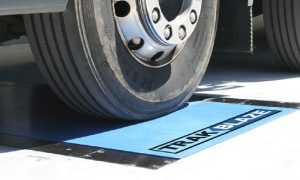Problems with Car Taillight Circuits: What’s Wrong with Your Car’s Lighting System?
A sophisticated electrical circuit is necessary for the effective operation of car taillights, which are crucial safety measures. The taillight circuit itself frequently has issues when these lights malfunction or act strangely. You can identify problems more accurately and keep your car safe and visible on the road by becoming aware of the internal electrical channels and typical errors. Here are several potential problems with the taillight circuit in your car.
Understanding the Taillight Circuit Basics
A taillight circuit is fundamentally a network consisting of the batteries, wiring harness, switches, and fuses, LEDs or bulbs, and connectors. Electrical current travels from the battery to the circuit to light up the taillight bulbs when you turn on your car’s lights. For the lights to function reliably, the connections and voltage levels must be correct. The taillights may fade, flicker, or stop operating completely if this flow is disrupted by anything from a corroded connector to a damaged cable.
Common Wiring Problems
One of the most common reasons for taillight circuit failures is wiring problems. Road debris, heat, or poor repairs can cause wires to fray, pinch, or break over time. Electrical flow can also be hampered by connector corrosion, particularly in moist environments. Taillights may operate sporadically or not at all due to a broken cable. Unexpected lighting failures can be avoided by regularly inspecting the wiring and connectors to find these issues early.
Blown Fuses and Faulty Switches
Fuses cut the circuit if the current exceeds limits. Blown fuses often disable one or both taillights. Changing a fuse is easy, but many fuse blows indicate a short circuit. Wearing or failing the taillight switch, normally incorporated with the headlamp control, can impede current flow. Testing electrical continuity and changing components are needed to diagnose switch failures.
The Importance of Professional Diagnostics
It might be difficult to diagnose electrical problems with taillight circuits because they consist of several interconnected parts. Expert mechanics evaluate the integrity of circuits and precisely trace defects using diagnostic instruments like multimeters and scan tools. Without the right information, attempting do-it-yourself repairs could result in further damage or safety hazards. Seeking professional assistance guarantees that underlying issues are accurately located and fixed, restoring complete and dependable taillight operation. For reliable diagnostics and solutions, trusted Auto Repair in Eugene, OR can ensure your vehicle’s lighting system functions safely and effectively.
Conclusion
Wiring damage, blown fuses, malfunctioning switches, or LED and bulb failures are the main causes of car taillight circuit problems. Every component is essential to sustaining a steady light output for safe driving. Recognizing symptoms and the need for expert repair is much easier when you understand what goes on inside the circuit. Maintaining a healthy taillight circuit helps you see on the road and avoid risky driving scenarios.




